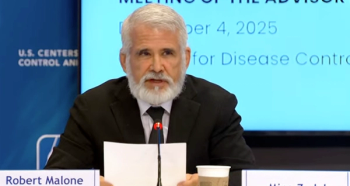
‘Primary care is in crisis’ – Reasons for optimism if the nation is willing to invest
Questions and answers from two experts’ conversation about ‘The Health of US Primary Care: 2024 Scorecard Report – No One Can See You Now.’
The Milbank Memorial Fund,
It was the second annual report on the state of primary care nationally. While the indications are not good, there are reasons for optimism because solutions are available if the nation will invest in them, said two experts.
The online presentation included a panel discussion with lead author Yalda Jabbarpour, MD, director of The Robert Graham Center; Margaret Flinter, PhD, APRN, vice president and clinical director of Community Health Center Inc./Moses/Weitzman Health System; Kyu Rhee, MD, MPP, president and CEO of the National Association of Community Health Centers; and Frances Stead Sellers of The Washington Post.
This transcript has been edited for length and clarity.
Frances Stead Sellers: Margaret, I'd like to start with you, if I may. We talked before and you express some optimism about this report that Yalda has just described to us so eloquently. Tell me what you see which bright sparks you see as we look at this data.
Margaret Flinter, APRN, PhD: Thank you all for the incredible work that's been done both by creating the NASEM (National Academies of Sciences, Engineering and Medicine) report and then the scorecard after it. You know, for instance, I am optimistic because this is a moment in time when we aren’t looking for a tremendous breakthrough in knowledge, a new invention, a new development, the magic pill, if you were. In fact we have solutions on the grounds that we need to, as you said so eloquently, Yalda, invest in. And those solutions form the basis of a primary care system that can do what I had spent my career trying to live up to, which is to make health care a right and not a privilege, and not just any old health care, but really excellent health care that can address the needs of people in our communities and in particularly resolve our health disparities. And I think the report outlines some very well. One, we need to train more people and I'm so glad Dr. Rhee is here as well. Kyu, you've done such a great job of advocating for the teaching health centers, for training physicians in primary care in health centers. I want to thank our colleagues at HRSA (Health Resources and Services Administration) who've invested in postgraduate training for nurse practitioners and PAs in health centers as well as the all-important behavioral health providers that are really a part of today's primary care if we want to be effective. So we have the training models in place, they need more investment, they need a lot more investment. And you can ask any primary care provider, if the primary care providers are enough to make all this work? They simply are not and we train need to train the other people on the team and invest financially in the nurses, in the medical assistants, in the community health workers. And then those folks who will manage that back-end technology that will relieve primary care providers of the burden of the dreaded inbox that leads to two or three or four hours’ worth of work at night. Of course, we also need to be recruiting people starting in our communities who will be that workforce of tomorrow, and who should look like the people that we care for. They should look like all of us, people from all over our communities, if we're going to address the persistent health inequities that we have.
Frances Stead Sellers: Dr. Rhee, you have a wide range, an interesting range of experience from public to private sectors. Do you have anything to add on these specific points about some optimism and the need for a broad-based teamwork approach?
Kyu Rhee, MD, MPP: I'm grateful. I think it's so important to be data-driven to look at the information ahead of us and I think this scorecard is an important marker of where we are as a country, where we are as a nation, and the needs that we have. So as a primary care doc, a former
Newsletter
Stay informed and empowered with Medical Economics enewsletter, delivering expert insights, financial strategies, practice management tips and technology trends — tailored for today’s physicians.















